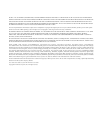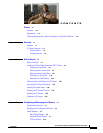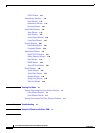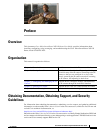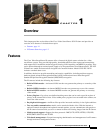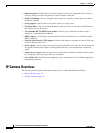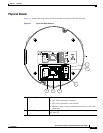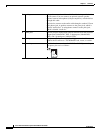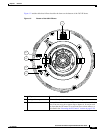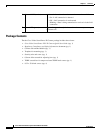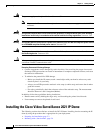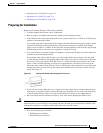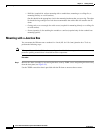
1-2
Cisco Video Surveillance System 2621 IP Dome User Guide
OL-24129-02
Chapter 1 Overview
IP Camera Overview
• Motion detection—The IP cameras can detect motion in up to four designated fields of view by
analyzing changes in pixels and generate an alert if motion is detected.
• Flexible scheduling—You can configure the IP cameras to respond to events that occur within a
designated schedule.
• Syslog support—The IP cameras can send log data to a Syslog server.
• IP address filter—You can designate IP addresses that can access an IP camera and IP addresses
that cannot access an IP camera.
• User-definable HTTP/ HTTPS port number—Allows you to define the port that is used to
connect to a camera through the Internet.
• DHCP support—An IP camera can automatically obtain its IP addresses in a network in which
DHCP is enabled.
• Network Time Protocol (NTP) support—Allows an IP camera to calibrate its internal clock with
a local or Internet time server.
• Power options—An IP camera can be powered with 12 volts DC or 24 volts AC, provided through
an optional external power adapter, or through PoE (802.3af), is provided through a supported
switch.
• Camera access control—You can control access to IP camera configuration windows and live video
by configuring various user types and log in credentials.
• Cisco Media API—The IP cameras supports the open, standards based, Cisco Media Application
Programming Interface.
IP Camera Overview
The following sections provide information about the Cisco Video Surveillance IP Camera:
• Physical Details, page 1-3
• Package Contents, page 1-6




